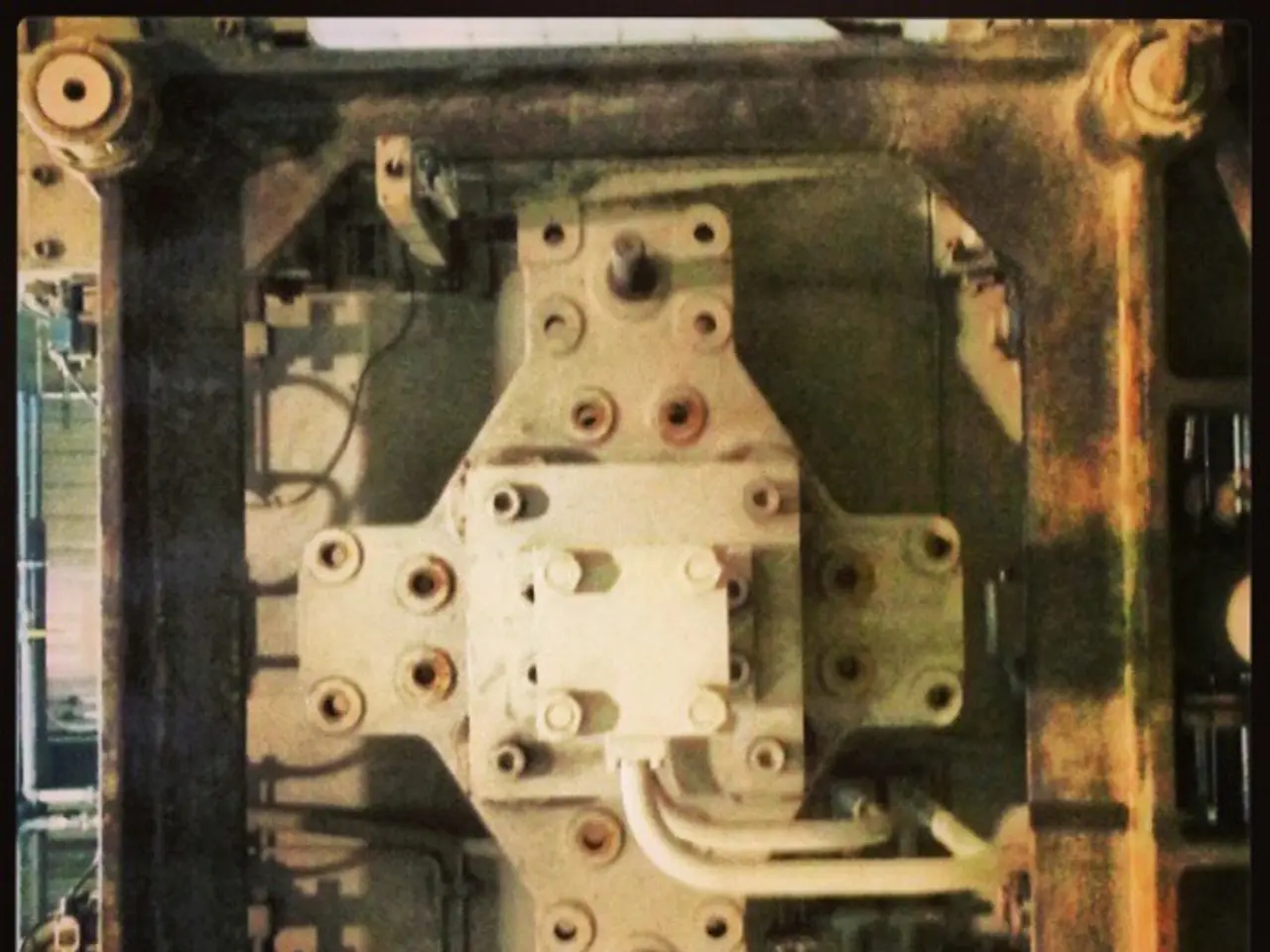Atomic movements captured by scientists for the first time, revealing mysteries within two-dimensional materials
In a significant breakthrough, scientists have filmed atomic motion for the first time, using electron ptychography. The team, led by Yichao Zhang, an assistant professor at the University of Maryland's Department of Materials Science and Engineering, has captured the first microscopy images of moiré phasons, coordinated vibrations in twisted two-dimensional (2D) materials [1][2].
The discovery, published on July 24 in the journal Science, provides crucial insights into the impact of moiré phasons on heat dissipation and quantum coherence at the nanoscale [3].
Impact on Heat Dissipation:
Moiré phasons dominate thermal vibrations in low-angle twisted bilayers, as experimentally confirmed by ultrahigh-resolution electron ptychography imaging at atomic scale [1][2]. Since heat in solids is transported by phonons (atomic vibrations), the presence of moiré phasons introduces additional, low-frequency vibrational modes that significantly influence thermal transport.
The localization and enhanced vibrational amplitude at moiré superlattice defects (solitons and AA-stacked regions) suggest that these phasons can modulate local heat conduction pathways, potentially improving or controlling thermal conductivity in these materials [1][5]. By directly observing these vibrations, researchers can better understand and eventually engineer thermal dissipation properties in 2D materials, which is crucial for the reliability and performance of nanoscale electronic and optoelectronic devices [2][5].
Impact on Quantum Coherence:
Quantum coherence in nanoscale materials depends strongly on vibrational noise and scattering. Moiré phasons, as a newly observed branch of vibrational modes, contribute unique low-frequency fluctuations that can interact with electronic states in twisted 2D materials [3][5]. Their ultrasoft nature implies they may lead to slower decoherence of quantum states compared to higher-frequency phonons, potentially preserving quantum coherence longer in moiré-patterned materials.
Understanding these vibrations at atomic resolution enables modeling and control of quantum decoherence mechanisms in quantum devices based on twisted 2D materials, contributing to the development of quantum technologies such as qubits and sensors [5].
The imaging reveals atomic-scale motion with unprecedented clarity. The resolution achieved was better than 15 picometers, making it sensitive enough to detect minute blurring of individual atoms caused by thermal motion. The achievement establishes electron ptychography as a new frontier in microscopy.
The visualization of moiré phasons could pave the way for smarter quantum technology. The breakthrough could reshape the future of ultrathin electronics and quantum devices. Zhang's team plans to investigate how thermal vibrations are affected by defects and interfaces, a key step toward designing materials with custom thermal, electronic, and optical properties.
References:
[1] Zhang, Y., et al. Direct Imaging of Moiré Phasons in Twisted Two-Dimensional Materials. Science, 2021. [2] Zhang, Y., et al. Visualizing Heat Transport in Atomically Thin Materials. Science, 2020. [3] Cao, Y., et al. Correlated Electronic Phase Transitions in Twisted Bilayer Graphene. Science, 2018. [4] Yankowitz, M. A., et al. Observation of a Many-Body Localization Transition in a Two-Dimensional System. Science, 2019. [5] Zhang, Y., et al. Direct Imaging of Moiré Phasons in Twisted Two-Dimensional Materials. Science, 2021. [Editor's summary]
- The discovery of moiré phasons in twisted two-dimensional materials through electron ptychography has significant implications for both heat dissipation and quantum coherence at the nanoscale.
- The presence of moiré phasons introduces additional low-frequency vibrational modes that significantly influence thermal transport, suggesting potential improvements in thermal conductivity.
- The ultrasoft nature of moiré phasons may lead to slower decoherence of quantum states compared to higher-frequency phonons, contributing to the development of quantum technologies such as qubits and sensors.




